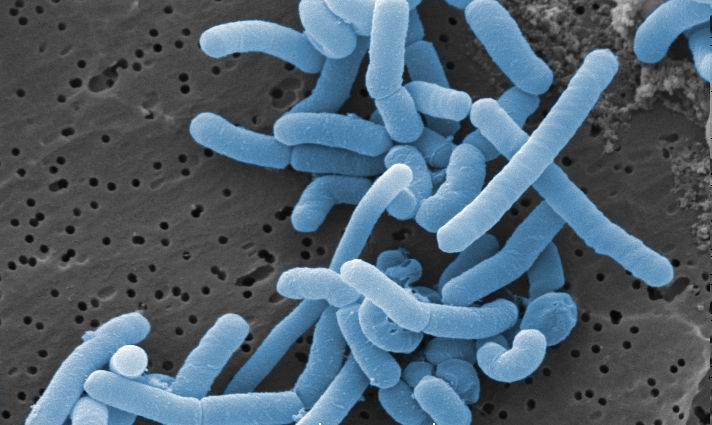As you may already know, microbes play a very important role in the body. Bacteria live on our skin, along our nasal passage, in the gut, and in the vagina. In recent years, the role of gut microbiota has garnered a lot of attention. However, the bacteria residing along the vaginal canal also play a very important role. The vaginal microbiome has been shown to influence sexual health, pregnancy, and potentially fertility. Overall, it is essential for homeostasis in the vagina, and disrupting this bacterial community can have severe impacts on one’s body.
But what determines vaginal microbial composition? Recent research has identified five distinct “vaginotypes” through sequencing of 16SrRNA. These community types produce different environments within the vaginal canal. For example, Lactobacillus species release bacteriocins, which kill or inhibit pathogens. Some vaginotypes may be more susceptible to infection; people with communities lacking in Lactobacillus species tend to struggle with recurring infections. The microbial composition of a person’s vagina is also heavily related to their ethnicity. This relationship is not yet fully understood, although it is possible that these microbes are affected by their host’s genetic variation, which may be related to ethnicity. Perhaps in the future, vaginotype will be taken into consideration when treating patients.
Some vaginotypes may be more susceptible to infection; people with communities lacking in Lactobacillus species tend to struggle with recurring infections.
One’s bacterial community is largely dependent on the birth process. Studies have shown that a person’s microbial community is mostly determined by their birth route. Babies born via the vaginal route come into contact with the bacteria in their mother’s vaginal canal, which then colonize the baby. In contrast, babies born via Cesarean section are colonized by bacteria associated with the mother’s skin or the hospital environment. Cesarean births increase the risk of immune-related disorders in children because their microbial composition may be lacking key beneficial species. Therefore, skin-to-skin contact has been shown to be very important in developing healthy microbiota in Cesarean-born babies. In a study, skin-to-skin contact decreased the likelihood of neonatal infections and other complications.
Studies have shown that a person’s microbial community is mostly determined by their birth route.
The main species of microbes residing in the vagina are of the Lactobacillus genus. Lactobacillus are beneficial species that also promote healthy digestion, although the Lactobacillus species in the vagina are different from those in the gut. These bacteria promote a healthy vagina by producing lactic acid, thus driving down the pH and inhibiting other bacteria from growing. Lactic acid production is extremely important, for studies have found that microbial communities in healthy vaginas are almost always dominated by lactic acid-producing species. Lactobacillus bacteria also outcompete harmful bacteria for space. Vaginal epithelial cells are very tolerant of Lactobacillus and will not summon inflammatory cytokines to defend against them, as they do for other bacteria they deem harmful. Lactobacillus are often used as a marker to indicate a healthy microbial community in the vagina, especially the L. crispatus species.
Lactic acid production is extremely important, for studies have found that microbial communities in healthy vaginas are almost always dominated by lactic acid-producing species.
When the microbial composition gets thrown off balance, bacterial vaginosis is a common result. This is a bacterial overgrowth caused by harmful bacteria dominating the vaginal tract. There is also evidence that an imbalance can lead to miscarriages and preterm birth in pregnant women, although this phenomenon is still being investigated.
One can promote a health vaginal microbiome by not douching, practicing safe sex, and using soaps that will not disrupt the pH of the vaginal tract. It may not be possible to alter the microbial composition; this is mostly determined by the bacteria one is exposed to at birth. Interestingly, studies have correlated a more nutritious diet and a lower fat intake to a lower risk of bacterial vaginosis. Probiotics taken orally have also been shown to favorably alter the vaginal microbiome. If we treat our microbes well, then they will return the favor by keeping us healthy.
MCN Am J Matern Child Nurs. (2017). DOI: 10.1097/NMC.0000000000000373
BYOJ (2016). DOI: 10.1111/1471-0528.14390
Obstet Gynecol. (2017). DOI: 10.1097/AOG.0000000000001932
Environmental Microbiology (2021). DOI: 10.1111/1462-2920.15441

